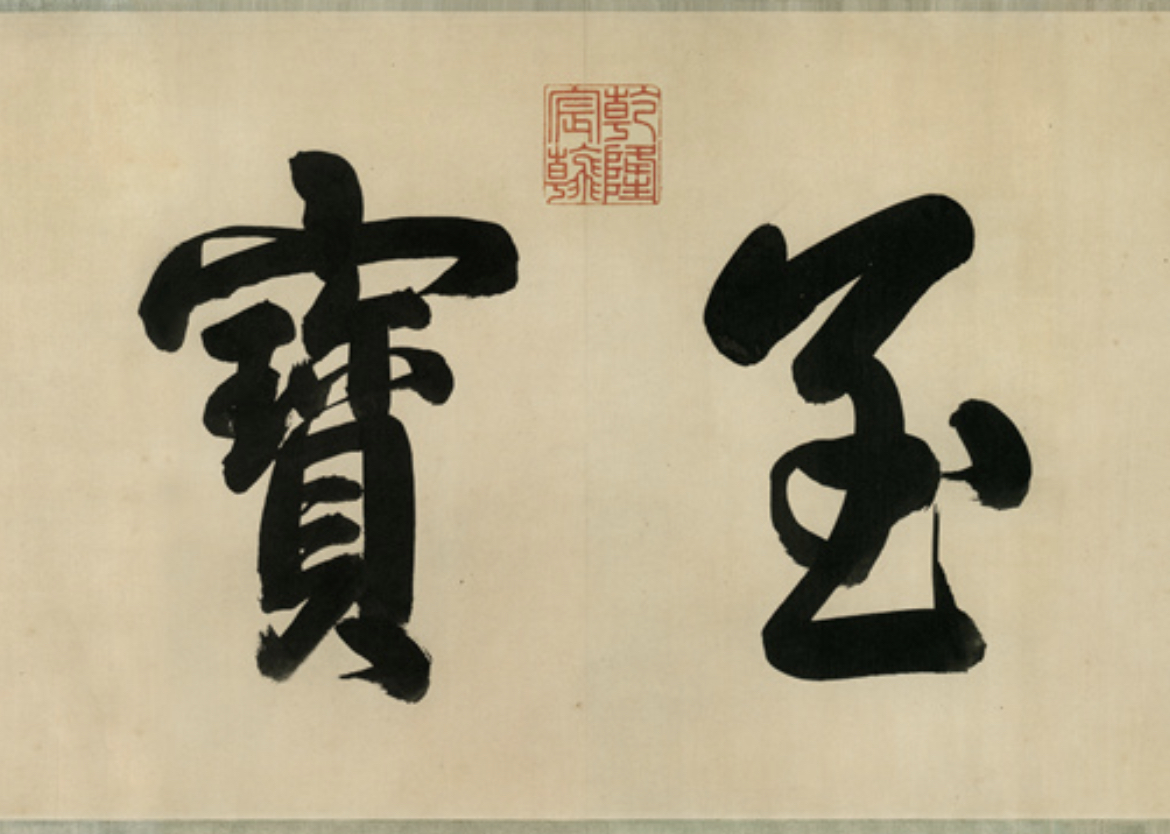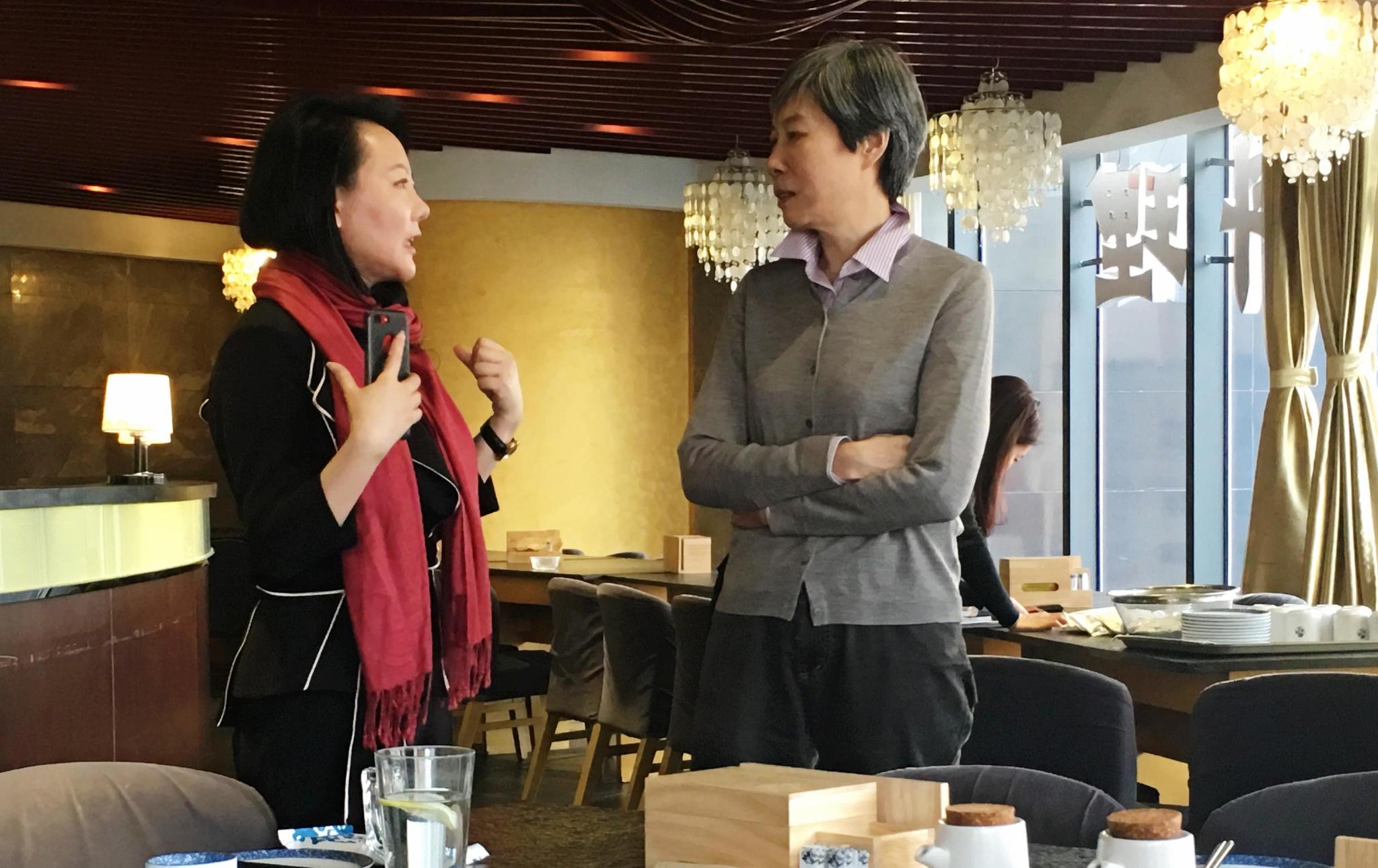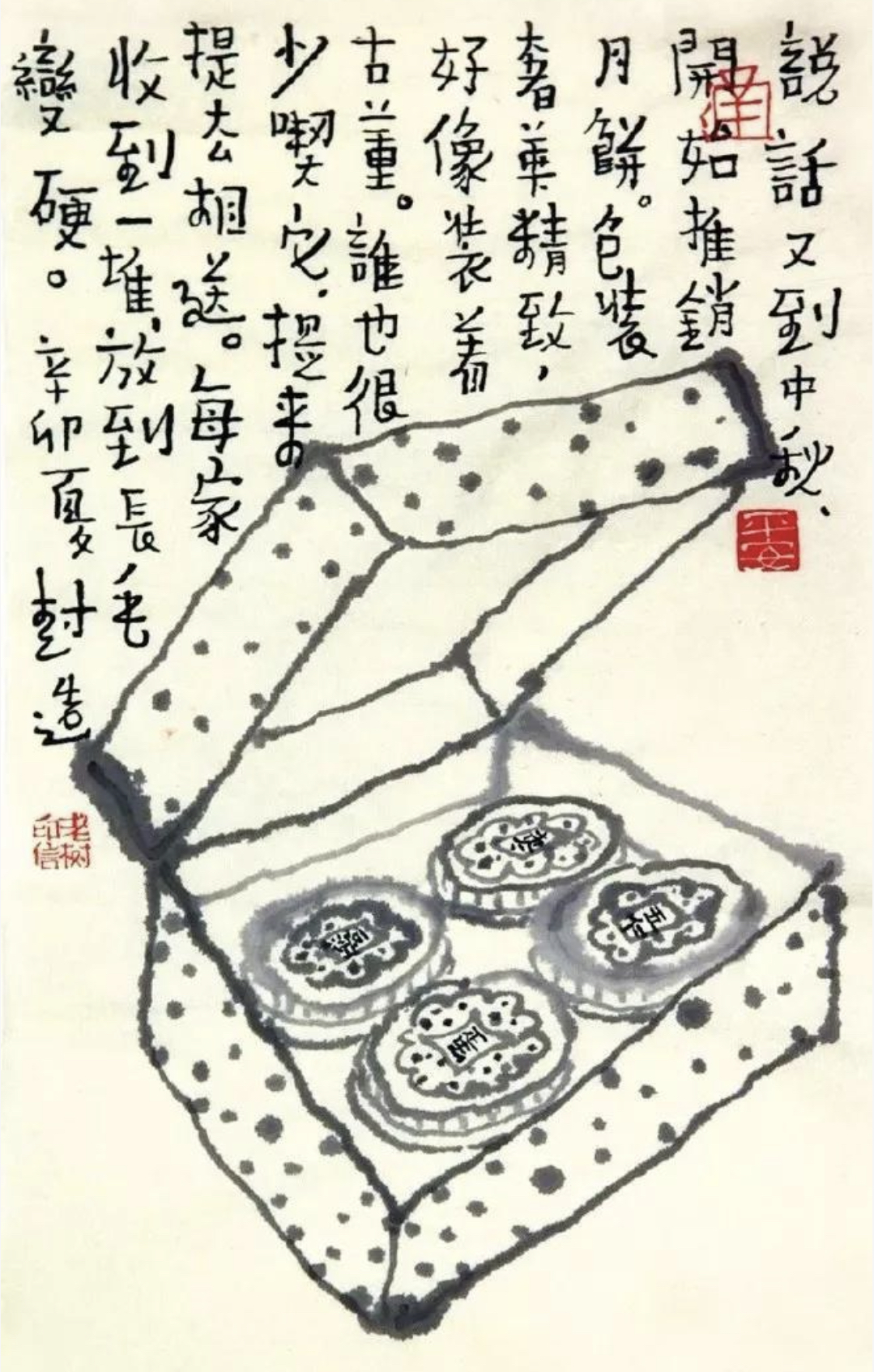A New Sinology Jotting
The Fifteenth Day of the Eighth Month of the lunar calendar, a day that in 2021 falls on the 21st of September, marks the Mid Autumn Festival 中秋節. A major public holiday in the People’s Republic since 2008, the day is also known as 團圓節, or the Festival of Reunions, a celebration of unity, togetherness, familial harmony and even conjugal felicity. In recent years the day is promoted as a ‘second Chinese Valentine’s’. Reunions were so rare and hard won in both China’s dynastic and modern eras that it is hardly surprising they are marked so frequently in the calendar and in the Chinese calendar the Mid Autumn Festival is second in importance only to the Spring Festival of the lunar new year as a time for family and friends.
***
We previously marked this festive occasion by publishing The Same Fair Moon 千里共嬋娟, a mini-anthology of literary and artistic works, in our series of New Sinology Jottings 後漢學劄記. Today we do so by reproducing a work of calligraphy that Qianlong called 至寶, ‘a most precious object’ or ‘absolute treasure’. In celebrating this theme our thoughts go to Geng Xiaonan 耿瀟男, one of the treasures of China today. Detained on 9 September 2020 and sentenced to three years jail in early February 2021, Xiaonan is spending Mid Autumn Festival isolated from family and friends. In a few poetic lines, Guo Yuhua 郭於華, a leading Beijing academic and a staunch supporter of heroic figures like Geng Xiaonan and her close friend Xu Zhangrun 許章潤, grieves over the cruel injustice visited upon Xiaonan.
— Geremie R. Barmé
Editor, China Heritage
21 September 2021
Mid Autumn Festival
Fifteenth Day of the Eighth Month of the
Xinchou Year of the Ox
辛丑牛年八月十五日
中秋節
***
Lunar Maria 月海 by Wu Fei 吳非
Listen to ‘Lunar Maria’ here
***
Related Material:
- New Sinology Jottings, China Heritage
- Xu Zhangrun et al, ‘Protesting the Wrongful Arrest of Geng Xiaonan in Beijing’, China Heritage, 22 October 2020
- The Editor & Samuel Wade, ‘Geng Xiaonan & the Siege of Beijing’, China Heritage, 12 October 2020
- Anonymous, ‘Geng Xiaonan, Ren Zhiqiang & China’s Refuseniks’, China Heritage, 2 October 2020
- Xu Zhangrun 許章潤, ‘Xu Zhangrun: “I Am Compelled to Speak Out in Defence of Geng Xiaonan” ’, China Heritage, 24 September 2020
- The Editor & Bei Ming 北明, ‘The Kafkaesque Trials of Geng Xiaonan’, China Heritage, 20 September 2020
- Bei Ming, 北明, ‘A Chinese Decembrist and Professor Xu Zhangrun’, China Heritage, 10 September 2020
- Ai Xiaoming 艾曉明, ‘Geng Xiaonan’s Dance of Defiance’, China Heritage, 16 September 2020

***
Thinking of Xiaonan at Mid Autumn
Guo Yuhua

There is no Mid Autumn Festival for Xiaonan
There’s nothing festive about this festival:
You, not free; me, bereft. There’s no joy for us to share.
Even as clouds chase that jade orb hanging high above.
There’s nothing festive about this festival:
No cups raised in welcome; no friends gathered in celebration.
You, enveloped by darkness, look up but cannot see the fair moon we should share.
There’s nothing festive about this festival:
The Cassia Palace cold now, human sentiment but a gossamer; the shackles are freezing.
Still they dance on, singing hosannas to their ‘age of peace’.
What kind of world are we living in?
(Note: For an explanation of the expression ‘the fair moon (we should share)’ 嬋娟, see The Same Fair Moon 千里共嬋娟, China Heritage, 4 October 2017.)
***

***
The ‘Mid Autumn Manuscript’ &
Intangible National Treasures
It is seventy years since the ‘Mid Autumn Manuscript’ 中秋帖, a calligraphic work attributed to Wang Xianzhi (王獻之, 344-386) of the Jin dynasty, was acquired in Hong Kong and sent to the capital of the newly established People’s Republic of China where it became part of the collection of the Beijing Palace Museum. The ‘Mid Autumn Manuscript’ had been in private hands from the Song to the Ming dynasties before entering the imperial collection in the Qing dynasty. Following the revolution of 1911 it was sold in 1924 by Jingyi 敬懿, a Dowager Imperial Noble Consort, one of the wives of Muzong, the Tongzhi Emperor, after the imperial family was expelled from the Forbidden City. Eventually mortgaged to a bank in Hong Kong, the manuscript was acquired for a small fortune by agents working at the behest of Zhou Enlai and transported to Beijing.

中秋不復不得相還為即甚省如何然勝人何慶等大軍
Note: The manuscript is a fragment of a letter, the precise meaning of this text remains in dispute.
***
Esteemed by the Gaozong Emperor, the Qing ruler commonly known as Qianlong, and kept close-at-hand in the Forbidden City as one of his beloved ‘Three Rarities’ 三希, the ‘Mid Autumn Manuscript’ is now thought to be a copy of the original made by Mi Fei (Mi Fu, 米芾, 1051–1107), a celebrated calligrapher of the Song. (The ‘Three Rarities’ are three calligraphic scrolls by Wang Xizhi, Wang Xianzhi and Wang Xun. The work in Wang Xizhi’s peerless hand is in the Taipei Palace Museum while the other two, having been acquired by Beijing in 1951, are in the mainland Palace Museum.)
***
The ‘National Treasure’ is applied with such thoughtless abandon as to be all but meaningless. The Japanese term ‘Intangible Living National Treasure’ 人間国宝/ にんげんこくほうis an apt description for some of the remarkable rarities of contemporary China, and I have had the good fortune of encountering a number of them over the years. They are individuals whose lives and activities exemplify the ‘independence of spirit and unfettered minds’ that feature in China Heritage and its predecessor publications.
The expression ‘independence of spirit and unfettered mind’ 獨立之精神,自由之思想 comes from the epitaph written by Chen Yinque (陳寅恪, 1890-1969, aka Chen Yinke) in 1929 to commemorate Wang Guowei (王國維, 1877-1927). It reads in part:
‘The future cannot be known; indeed there may come a time when this Gentleman’s work no longer enjoys preeminence, just as there are aspects of his scholarship that invite disputation. Yet his was an Independent Spirit and his a Mind Unfettered — these will survive the millennia to share the longevity of Heaven and Earth, shining for eternity as do the Sun, the Moon and the very Stars themselves.’
來世不可知者也,先生之著述,或有時而不彰。先生之學說,或有時而可商。惟此獨立之精神,自由之思想,曆千萬祀,與天壤而同久,共三光而永光。
— from ‘The Two Scholars Who Haunt Tsinghua University’
China Heritage, 28 April, 2019
The Intangible National Treasures that I recall fondly on the night of the full moon of the Eighth Lunar Month include Yang Xianyi 楊憲益 and Wu Zuguang 吳祖光, as well as Liu Xiaobo 劉曉波 and Dai Qing 戴晴, and the scientists Fang Lizhi 方勵之 and Li Shuxian 李淑嫻. I also think constantly of Xu Zhangrun, a unique figure. We can see the same moon even though we may never meet in person. This Mid Autumn commemoration is, as we noted in the introduction, composed for Geng Xiaonan, another Intangible Living National Treasure.
***
In 1986, Wang Meng (王蒙, 1934), a famous novelist and arguably the best cultural minister in the history of China’s people’s republic, gave Liu Xiaobo short shrift. The garrulous graduate student had mocked the literary scene over which Wang presided in a freewheeling speech that skewered the bombast and self-serving vacuousness of ‘new era socialist literature’.
In turn, Wang dismissed Liu Xiaobo as an obstreperous ‘dark horse’, an instant celebrity whose notoriety would fade as quickly as he had earned it. ‘Such talents shine but for a few days’ 各領風騷三五天, Wang remarked in a jocular reformulation a famous line from a Qing-era poem written in praise of the genius of Li Bo and Du Fu. (See Zhao Yi 趙翼, ‘Five Poems on Poetry, No. 2’《論詩五首·其二》.)
Today, thirty-five years later, the octogenarian Wang Meng enjoys a position as a respected, if increasingly irrelevant, Party writer. Even though he died in prison over four years ago, Liu Xiaobo’s star continues to shine and will, to quote Chen Yinque, ‘survive the millennia to share the longevity of Heaven and Earth.’
China’s other Intangible National Treasures are destined to enjoy a similar longevity.
***
Mid Autumn Festival is on the way and they’re already promoting Moon Cakes. The packaging is so extravagant that you’d think the boxes were full of antiques. The Moon Cakes duly do the rounds as presents, given and received hither and yon, though they generally go uneaten. Every year, families are left with piles of the things that gradually get hard and grow mould.
— Lao Shu 老樹
Summer, Xinmao
Lunar Year of the Rabbit
[2011]


